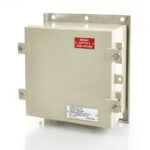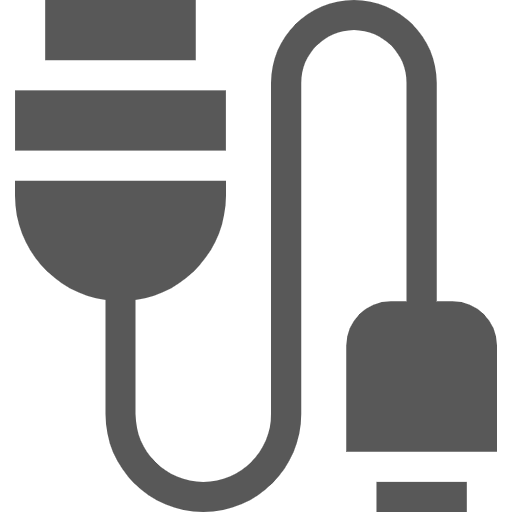High voltage motors are integral to various industrial applications, powering essential machinery and processes. However, their operation in demanding environments poses significant challenges, particularly concerning reliability and safety. Effective monitoring of these motors is crucial to prevent failures, enhance performance, and ensure operational continuity. This article delves into the various aspects of high voltage motor monitoring, exploring its importance, methodologies, and the technologies that facilitate it.
Understanding High Voltage Motors
High voltage motors are designed to operate at voltages exceeding 1,000 volts. They are commonly used in industries such as mining, oil and gas, and manufacturing, where they drive heavy machinery and equipment. The efficiency and reliability of these motors are paramount, as any failure can lead to costly downtime and safety hazards.
Key Characteristics of High Voltage Motors
- Power Output: High voltage motors typically deliver substantial power, making them suitable for heavy-duty applications.
- Efficiency: These motors are designed for optimal efficiency, reducing energy consumption and operational costs.
- Durability: Built to withstand harsh conditions, high voltage motors often feature robust construction and advanced materials.
Applications of High Voltage Motors
High voltage motors find applications in various sectors, including:
- Mining: Used to power conveyors, crushers, and other heavy equipment.
- Oil and Gas: Essential for driving pumps and compressors in extraction and processing.
- Manufacturing: Utilised in assembly lines and production machinery.
The Importance of Monitoring High Voltage Motors
Monitoring high voltage motors is critical for several reasons:
Predictive Maintenance
By continuously monitoring motor performance, operators can identify potential issues before they escalate into significant failures. This proactive approach allows for timely maintenance, reducing unplanned downtime.
Safety Assurance
High voltage motors operate under extreme conditions, and any malfunction can pose serious safety risks. Effective monitoring helps ensure that motors operate within safe parameters, protecting both personnel and equipment.
Performance Optimisation
Monitoring systems provide valuable data on motor performance, enabling operators to optimise efficiency and reduce energy consumption. This not only lowers operational costs but also extends the lifespan of the equipment.
Key Monitoring Techniques
Several techniques are employed to monitor high voltage motors effectively:
Vibration Analysis
Vibration analysis involves measuring the vibrations produced by a motor during operation. Abnormal vibration patterns can indicate issues such as misalignment, imbalance, or bearing wear. By analysing these vibrations, technicians can diagnose problems early and schedule maintenance accordingly.
Temperature Monitoring
Temperature is a critical parameter in motor operation. Excessive heat can lead to insulation breakdown and eventual motor failure. Temperature sensors can be installed to provide real-time data, allowing for immediate action if temperatures exceed safe limits.
Partial Discharge Detection
Partial discharge (PD) is a phenomenon that occurs when there are defects in the insulation of high voltage equipment. Monitoring for PD can help identify insulation degradation before it leads to catastrophic failure. Advanced PD monitoring systems can detect and analyse these discharges, providing insights into the health of the motor.
Current and Voltage Monitoring
Monitoring the electrical parameters of high voltage motors is essential for assessing their performance. Abnormal current or voltage readings can indicate underlying issues, such as grounding problems or electrical imbalances. By continuously tracking these parameters, operators can ensure optimal motor operation.
Advanced Monitoring Technologies
The evolution of technology has led to the development of sophisticated monitoring solutions for high voltage motors:
Condition Monitoring Systems
Condition monitoring systems integrate various sensors and data analytics tools to provide a comprehensive view of motor health. These systems can analyse data in real-time, offering insights into performance trends and potential issues.
IoT and Remote Monitoring
The Internet of Things (IoT) has revolutionised motor monitoring by enabling remote access to performance data. Operators can monitor motors from anywhere, receiving alerts and notifications about potential issues. This capability enhances responsiveness and allows for more efficient maintenance planning.
Machine Learning and AI
Artificial intelligence and machine learning algorithms can analyse vast amounts of data collected from high voltage motors. These technologies can identify patterns and predict failures, enabling operators to implement preventive measures before issues arise.
Challenges in High Voltage Motor Monitoring
Despite the advancements in monitoring technologies, several challenges remain:
Environmental Factors
High voltage motors often operate in harsh environments, exposing them to dust, moisture, and extreme temperatures. These conditions can affect the performance of monitoring sensors and systems, necessitating robust solutions.
Integration with Existing Systems
Integrating new monitoring technologies with legacy systems can be complex. Operators must ensure compatibility and seamless data flow between different systems to maximise the benefits of monitoring.
Data Management
The volume of data generated by monitoring systems can be overwhelming. Effective data management strategies are essential to ensure that valuable insights are not lost in the noise.
Best Practices for High Voltage Motor Monitoring
To maximise the effectiveness of high voltage motor monitoring, operators should consider the following best practices:
Regular Calibration of Sensors
Ensuring that monitoring sensors are regularly calibrated is crucial for accurate data collection. This practice helps maintain the reliability of monitoring systems and ensures that operators receive precise information.
Comprehensive Training for Personnel
Training personnel on the use of monitoring technologies and interpreting data is essential. Well-informed staff can respond quickly to alerts and make informed decisions regarding maintenance and operations.
Establishing Clear Maintenance Protocols
Developing clear maintenance protocols based on monitoring data can enhance operational efficiency. Operators should establish guidelines for responding to specific alerts and scheduling maintenance activities.
Future Trends in High Voltage Motor Monitoring
The future of high voltage motor monitoring is likely to be shaped by several emerging trends:
Increased Automation
As industries continue to embrace automation, monitoring systems will become more integrated with automated processes. This trend will enhance efficiency and reduce the need for manual intervention.
Enhanced Data Analytics
Advancements in data analytics will enable more sophisticated analysis of motor performance. Operators will be able to leverage predictive analytics to anticipate failures and optimise maintenance schedules.
Greater Focus on Sustainability
With a growing emphasis on sustainability, monitoring systems will play a crucial role in optimising energy consumption and reducing the environmental impact of high voltage motors.
High voltage motor monitoring is essential for ensuring the reliability, safety, and efficiency of industrial operations. By employing advanced monitoring techniques and technologies, operators can proactively manage motor health, minimise downtime, and enhance performance. As the industry continues to evolve, embracing new trends and best practices will be vital for maximising the benefits of high voltage motor monitoring.











